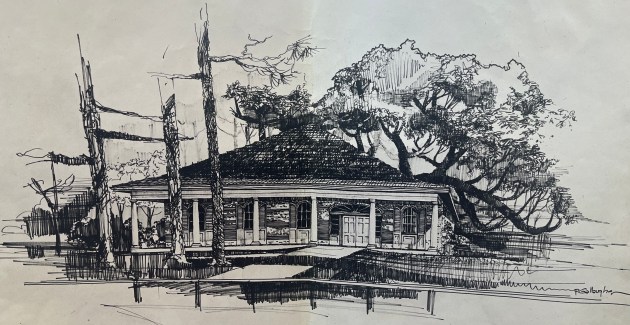The Informer: Imperial Calcasieu Museum reflective of local history
Published 7:07 am Saturday, May 31, 2025
The Imperial Calcasieu Museum is itself reflective of local history.
The bricks were salvaged from the old Missouri Pacific Railroad station. The white columns are from the once-proud Majestic Hotel — a Lake Charles landmark that was demolished in the late 1960s — and the beams and balustrades are from old homes of the area.
The 4,000-square-foot building, constructed at a cost of $100,000, sits on about an acre of land at the corner of Sallier and Ethel streets.
“The queen of the grounds is the historic Sallier Oak with its wide-spreading branches,” according to a May 31, 1981, edition of the American Press celebrating the 18th anniversary of the museum.
Thought to be planted by Charles Sallier when he came to Lake Charles in 1783, “records show that the land where the oak and the museum are situated was presented in 1860 by Catherine LeBleu Sallier.”
The tree is registered as a member of the Live Oak Society of the Louisiana Garden Club Federation. A historical marker was placed near the tree by the Daughters of the American Revolution.
In March of 1963, the Junior League of Lake Charles established the Imperial Calcasieu Historical Museum, later to become the Imperial Calcasieu Museum.
“The museum was first located in City Hall, then some months later, in December of that same year, the museum was moved to the historic little brick building at 1019 Lakeshore Drive through the cooperation of the Calcasieu Parish Police Jury,” the newspaper reports.
The latter location now serves as the Junior League headquarters.
The third — and current — location of the museum is at 204 W. Sallier St. Both the land and the Louisiana Colonial brick building were gifts from Mr. and Mrs. Frank Gibson and Dr. and Mrs. Garnett Barham.
Imperial Calcasieu originally compromised what is now Allen, Beauregard, Calcasieu, Cameron and Jeff Davis parishes.
“Relics to be found in the museum date back as far as the time of the Indians — remains of Indian pottery found in the lake and arrowheads found in the area,” the 1981 edition reported. “Cannon balls believed to be from one of Jean Lafitte’s ships are also among artifacts. These were discovered when Contraband Bayou was dredged some years ago, a museum spokesman said,” the newspaper reported.
Other items include historic photographs of early Lake Charles; the steering wheel of the Borealis Rex, a paddle boat that used to ply local waters; old shaving mugs once in used in the community; and replicas of all 10 flags that have flown over Louisiana.
Also in the collection is the uniform worn by the late Gen. Claire Chennault of Flying Tigers fame and the wedding gown of his wife, Anna Chennault.
The museum also boasts a permanent art collection including works of John James Audubon, Boyd Cruise, Angela Gregory and Lynda Benglis.
The museum is open 12 months of the year and offers a minimum of 36 weeks of cultural-visual arts programming.
The museum is open 10 a.m.-2 p.m. Tuesdays and Saturdays and 10 a.m.-6 p.m. Wednesday through Friday. Admission is free.







